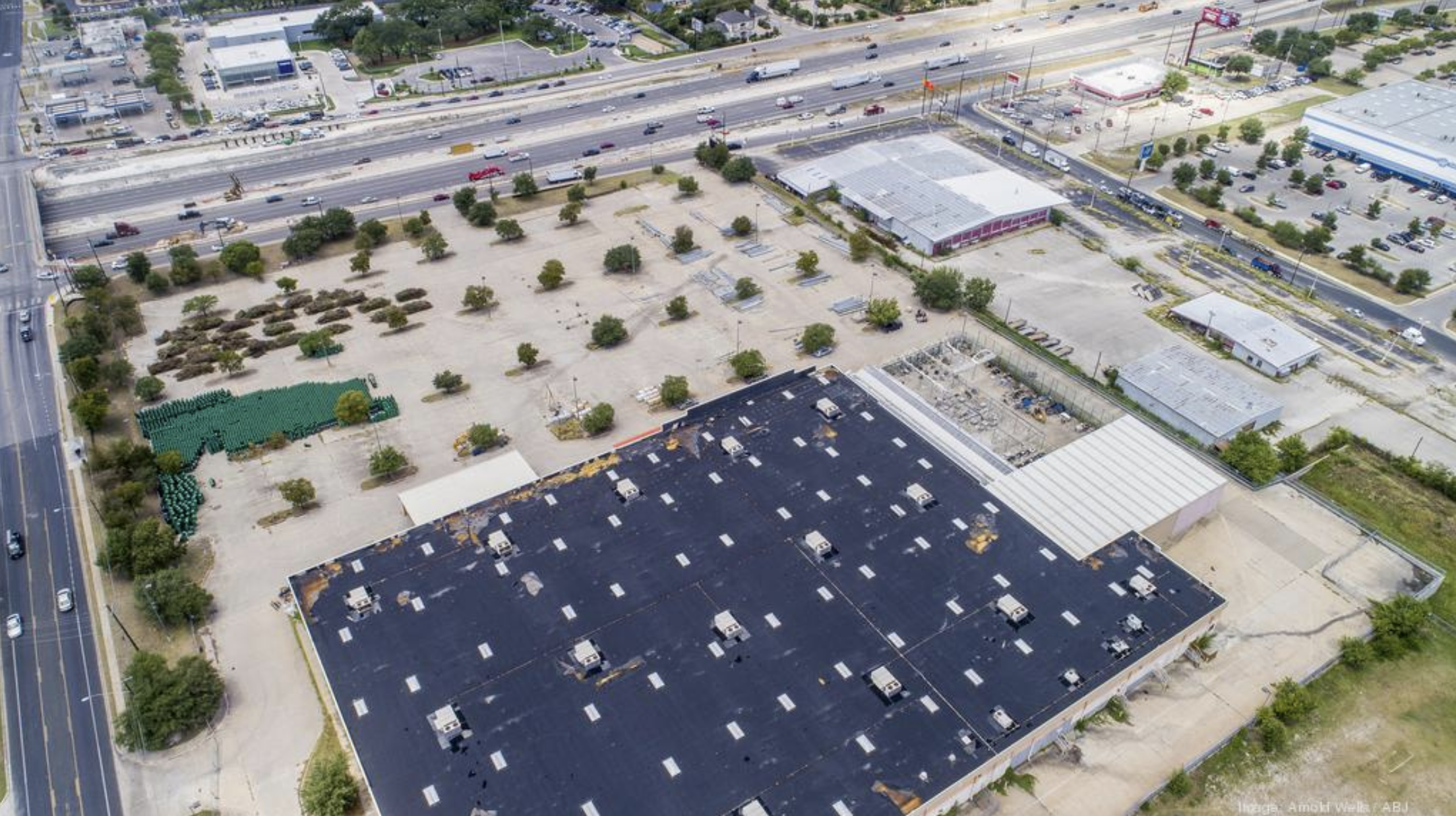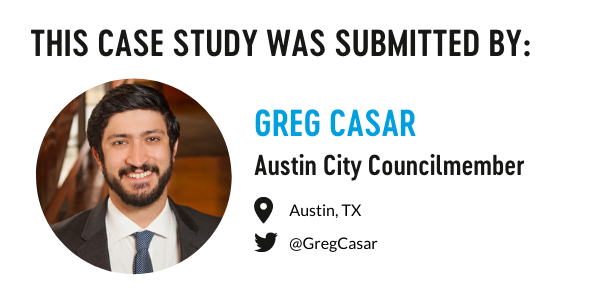St. John’s Community-City Development
Austin, TX
Population: 1,000,000 - 5,000,000 | Government type: City | Topic: Neighborhood Revitalization
OVERVIEW
Between 2008 and 2013, the city of Austin purchased two vacant pieces of land along highway I-35, formerly a Home Depot and a car dealership, for $11 million. The money came from a public safety bond package approved by voters in 2006. The initial plan, which never came to fruition, was to turn the site into a police substation. The two lots remained vacant for years until Councilmember Greg Casar, whose district overlaps with the land, began a process to develop the land to serve the St. John's neighborhood. In December 2017, Austin City Council passed a resolution directing the city manager to work with the surrounding neighborhoods on a new vision for the St. John property to better serve the community. On July 29th, 2020, this vision was affirmed by the council. The 19-acre parcel soon became a cornerstone of a revitalization effort in Northeast Austin.
The St. Johns area is isolated and under-resourced due to its proximity to three major highways. This was one of the many development tactics used to cut off predominantly Black and Brown neighborhoods from economic development when the city began to boom in the mid-20th century. We still see the impacts of this practice today, as health outcomes can be predicted by which side of the highway people live on. Neighborhoods on the East side of I-35, where St. Johns is located, have a lower life expectancy and more severe health problems than those that live on the west side. The council has been working to confront and change these systematically racist housing and development policies. This site offers substantial opportunity for new uses that could benefit the surrounding community as well as setting a precedent for how community input shapes the use and revitalization process for how public land.
A request-for-proposal (RFP) process, still underway, is currently soliciting developer proposals to meet the desired goals of the land redevelopment as outlined above. This project will be a public-private partnership with city dollars coming from multiple avenues, including bond monies. Since this is a city project funded by public dollars, certain Austin requirements regarding construction projects will apply. These requirements include minority‐owned and women‐owned business enterprise procurement; standards for the demolition of commercial buildings; and third‐party agreements which incorporate payment of a living wage, ensuring worker safety, and project sustainability.
Founded by emancipated slaves after the Civil War, St. John’s originated as a freedman’s community on the outskirts of Austin. In the 20th century, state and local governments continued to underinvest in the neighborhood through segregationist policies. Today, St. John’s is home to a large Latinx population grappling with rising housing and rent costs. This project prioritizes affordability with goals of at least 50% of the housing units being affordable according to the Area Median Family Income. This process, and its intended outcomes, will hopefully set the stage for future public land and development projects in the city.
Collaborative Governance
Prior to the city’s 2017 resolution, Councilmember Casar’s office led a public input process in the surrounding neighborhoods to get feedback on how the community would like to see the land used. His office conducted door-knocking efforts and digital outreach resulting in over 600 survey responses and several community input meetings. Sixty-five percent of residents in District 4 are Hispanic-Latinx according to 2010 census data, and the district’s poverty rate is 31 percent—one of the highest in the city. Sixteen percent of the surveys were completed in Spanish.
The survey process intentionally ensured that community residents had significant input into how public land is used. In order to make the process as inclusive as possible, they focused on interviewing residents in the surrounding area and created Spanish-language surveys on paper and online.
The two-year process resulted in a clear vision to support the whole community in this historic neighborhood by reinforcing its strengths and by enhancing its services and quality of life through redevelopment. The plan for the redevelopment included:
A mixed‐income, mixed‐use district with affordable housing, particularly accessible to current and past residents of the neighborhood
Open space for recreation and congregation
Space for community retail and support services specific to the St. John neighborhood
Emphasis on equity
The St. John's neighborhood was officially annexed in 1951, but it has historically lacked access to adequate city services and infrastructure. Austin has experienced a consistent construction and population boom since the early 1990s that has resulted in a dramatic rise in housing costs and a decrease in overall affordability—trends that continue to leave communities of color, including St. John’s, behind.
The St. John redevelopment plan is designed to both maintain the integrity of the historic neighborhoods surrounding the development, while also providing direct benefits and mitigating displacement of longtime residents and families. The neighborhood’s historically low housing costs, coupled with the city’s history of publicly-supported racial segregation, make this particular neighborhood vulnerable to gentrification.
This project, if successful, will set a precedent for how Austin incorporates public input to the use and revitalization of public land. It will stand as an example of a development project that can prevent displacement in a neighborhood vulnerable to gentrification, provide input from surrounding neighborhoods on the vital community space they want and need, and provide access to jobs.
Analysis
The state of Texas is known for preempting local progressive policies in many of its cities, but this community development project falls within the purview of zoning and redevelopment which is usually under local control.
Local government dynamics: The Austin City Council is a mostly progressive body, but its role in the project was minimal and relatively uncontroversial.
Policy: Community-driven development processes in underserved neighborhoods in partnership with the city can lack depth, but the St. John project is a robust example of neighborhood revitalization with sustained resident engagement.
Last updated: January 19, 2021
If you’re interested in learning more, please contact info@localprogress.org













